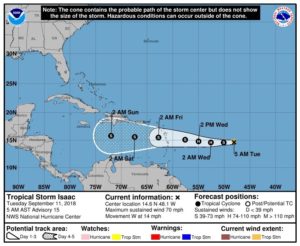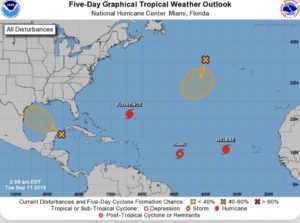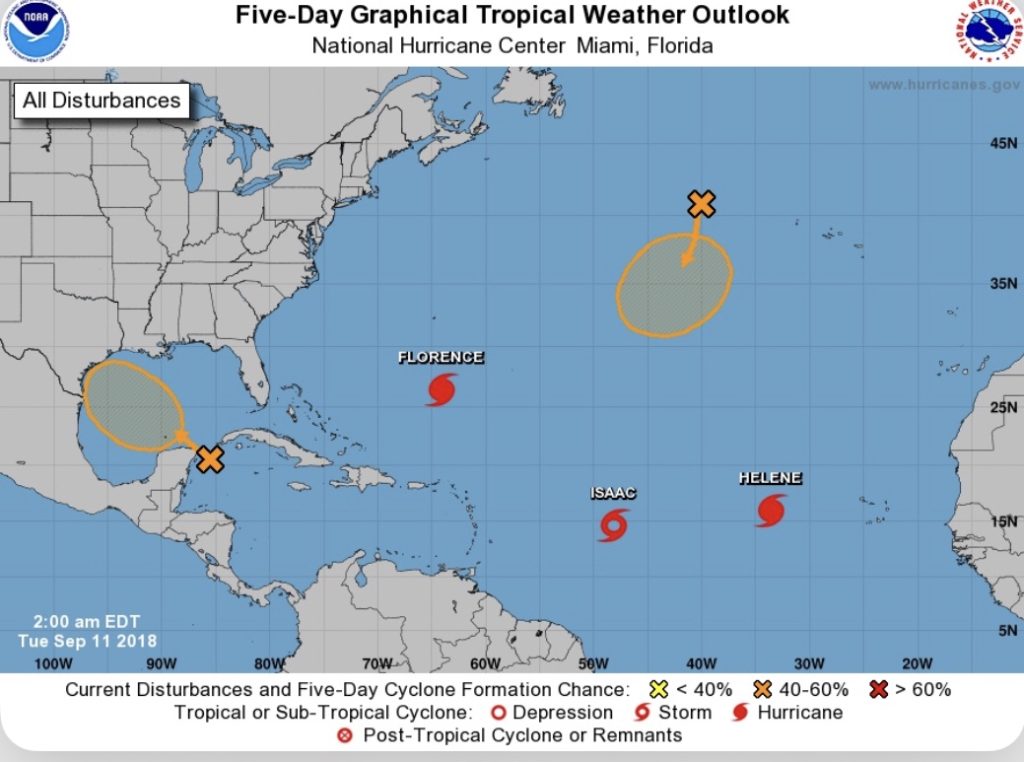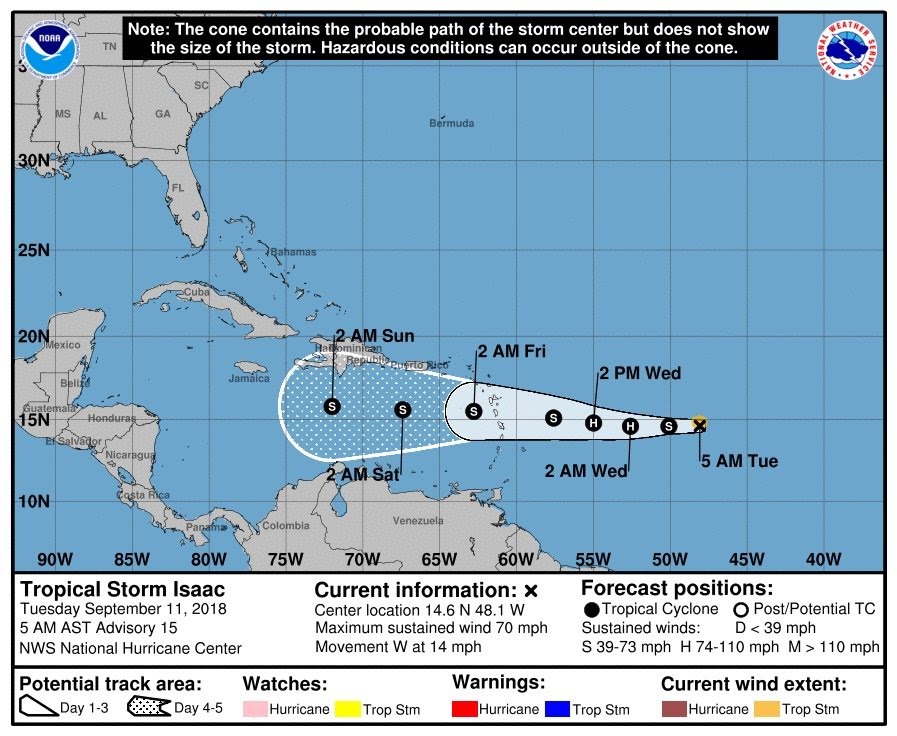Published 11 September 2018
Buckie Got It, St. Kitts and Nevis News Source

Tropical Storm Isaac changed little overnight and is still a strong tropical storm as of Tuesday morning as it tracked toward the Caribbean.
It is expected to be at near hurricane strength as it nears the Lesser Antilles on Thursday but could weaken later this week.
According to the National Hurricane Center, as of 4 a.m. CDT Tuesday Tropical Storm Isaac was located about 880 miles east of the Lesser Antilles and was moving west at 14 mph.
Isaac had winds just below hurricane force at 70 mph. Hurricane winds begin at 74 mph. The official forecast shows Isaac becoming a hurricane again briefly before weakening again on Thursday.
Where is Isaac heading? The hurricane center thinks Isaac will continue heading west for the rest of the week.
It could move through the Lesser Antilles and into the Caribbean by Thursday at near hurricane strength.
Although it was in a favorable environment Isaac has not strengthened as originally forecast, but the hurricane center noted that forecast confidence is on the low side.
Isaac is a small storm, which makes intensity forecasting particularly challenging. Isaac could make it back to hurricane strength at some point but is forecast to weaken as it enters the Caribbean because of increasing wind shear.
Isaac’s path is still not set in stone, either.
“Although there remains a fair amount of spread in the models, the usually more reliable GFS and ECMWF models continue to show a westward motion during the next several days,” forecasters said Tuesday morning.
Could Isaac make it into the Gulf and affect the U.S.? It’s too soon to say, however many forecast models show Isaac continuing on a westward track and possibly affecting Central America.
But there’s another system that could put a tropical depression in the Gulf this week.
The hurricane center has been tracking an area of disturbed weather that could become a tropical depression on Thursday or Friday as it moves into the western Gulf.
The hurricane center warned those along the Gulf Coast from northeastern Mexico to Louisiana to keep an eye on the system








